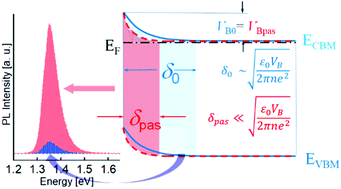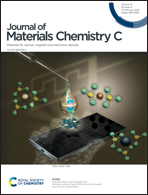Abnormal electronic structure of chemically modified n-InP(100) surfaces†
Abstract
Photoluminescence, Raman scattering, and X-ray photoelectron spectroscopy have been used to study the electronic structure of n-InP(100) surfaces modified with different sulfide solutions. Because of such a modification, the photoluminescence intensity of the semiconductor increases evidencing the surface electronic passivation. The efficiency of the n-InP(100) surface electronic passivation depends on the solvent and on the concentration of sulfide ions in the solution. The enhancement in the photoluminescence intensity after passivation is accompanied by narrowing of the surface space charge layer, while the surface band bending remains essentially intact or even increases after treatment with a dilute aqueous ammonium sulfide solution. Therefore, the shape of the band potentials in the near-surface region of the semiconductor is modified essentially by chemical treatment with sulfide solutions. In particular, the width of the space charge layer for chemically modified n-InP(100) surfaces is no longer proportional to the square root of the surface band bending due to occurrence of the surface dipole layer induced by In–S chemical bonds.



 Please wait while we load your content...
Please wait while we load your content...